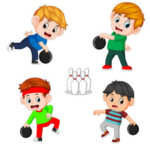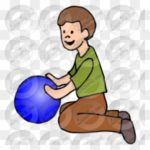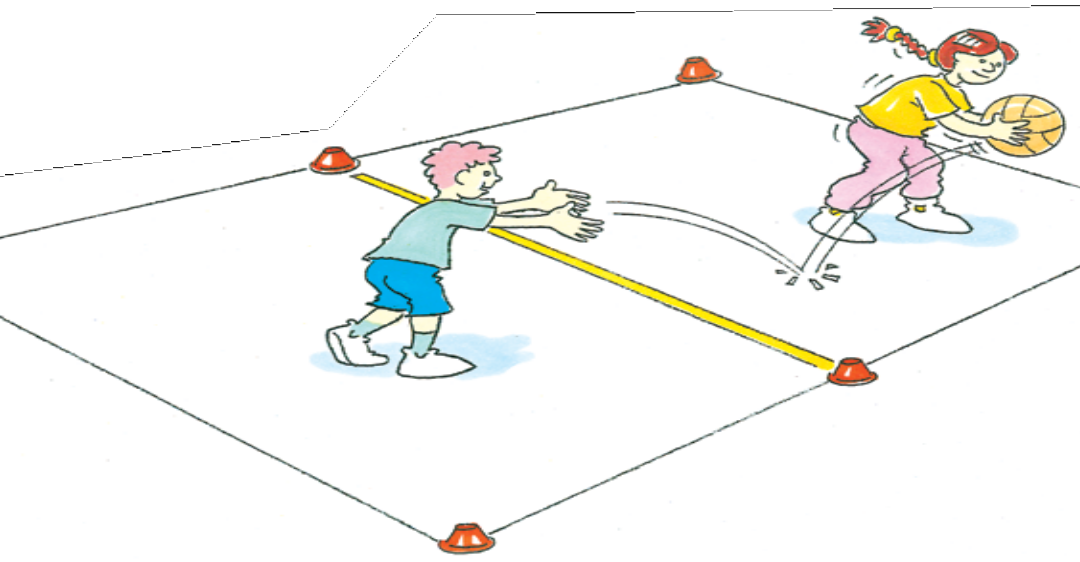
by Santosh | Jun 15, 2020 | Fitness Activity
LEARNING OUTCOME
Develop the concepts of finding space, anticipation, teamwork, and deception.
TEACHING CUES
- Demonstrate the activity using players from the group.
- Let the game run a little before any intervention – ‘let the kids play!’
ACTIVITY SET-UP AND PROCEDURE
EQUIPMENT:
- One volleyball or similar per pair
- A court surface that allows the ball to bounce
- 6 markers per court
SET-UP:
- Form pairs – see Form a Group
- Players in position as shown – player with the ball serves.
ACTIVITY PROCEDURES:
- The ball must cross the line above waist height.
- Play continues until one player cannot return the ball after one bounce, or the ball is thrown out of court, or the receiver drops the ball.
- The serve alternates between players.
- Play to a specified number of points, (e.g. 5) or a set time limit (e.g. 3 minutes).
Variations
- Play 3 v 3 – alternate serves between teams. Ensure each player has an opportunity to serve.
- Restrict the time in possession depending on the ability of the players (e.g. 3 seconds or more).
- Provide a ‘no-go’ or bounce-free zone.
- Restrict the type of passes that players can use (e.g. chest pass, one handed pass, overhead pass, underarm pass).
- Allow students to select different rules to suit their ability and make the competition more even (e.g. one student is allowed two bounces and their opponent only one).
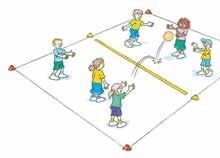
COOL DOWN/ CLOSURE
Review Skill/Activity, stretching, and questions.
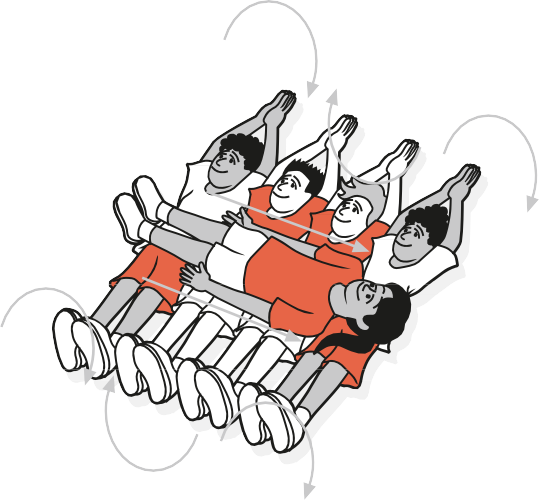
by Santosh | Jun 15, 2020 | Fitness Activity
Movement skills/concepts
Rolling along a long axis, relationships (with others), problem solving and timing.
Set-up
Grass or tumbling mats. Groups of four-five.
Activity
Children lie side by side, shoulder to shoulder to form a conveyor belt. One child lies on their back across the conveyor belt. On a signal, all children in the conveyor belt rotate in the same direction, moving the top child along the conveyor belt.
How far can you travel, keeping the child on the belt?
Can you see …?
- individuals maintaining a long, straight body
- conveyor belt staying close together
You could ask …
What can you do to ensure you move together in the conveyor belt?
Variations
Use soft toys: Line up soft toys as the conveyor belt for the children to roll over.
Increase number of children: Make the conveyor belt longer with more children. Also make it continuous – after the top child passes over the belt, they quickly get up and add themself to the front of the belt.
COOL DOWN/ CLOSURE
Review Skill/Activity, stretching, and questions.

by Neetu | Jun 12, 2020 | Fitness Activity
Aim
How to find general space inside the four boundaries.
Equipment Required
- Four cones for boundaries (same color).
- Spot marker for every kid.
- Skill cards of shapes.
- Music Player & pen drive.
Play Area Set-Up
- Spread out the sports marker inside the activity area.
- Keep four boundaries and tell them the importance of it.
- Explain that when you give a specific signal (e.g. whistle blow), the children must Stop/Freeze, Look, and Listen.
Activity 1 Description
- Greet the children, introduce yourself, and bring them to the activity area.
- Tell them to take personal space on their spot marker without sliding it from one place to another.
- Now explain to them the general space. It means space inside the four boundaries that can be used by anyone without hurting others.
Activity 2 Description
Purpose of Activity:
To give students an opportunity to practice a variety of locomotor skills and numbers, letters, and shapes to make them understand better about general space.
- Spot markers are randomly placed in the activity area.
- Students begin to move in general space using the locomotor skill specified by the teacher, on the pre-arranged signal (when the music starts). When the music stops, the students quickly move to the closest spot. At that point, they show the number, letter, or shape that the teacher is holding up or calls out.
- Give students sufficient time to finish–this of course will vary with age, and repeat with a new locomotor skill and new number, letter, or shape. Directions and pathways can be added as appropriate.
Variations:
- Use the first letter of whatever locomotor skill was just used.
- Ropes can be placed at each spot, and children can practice making numbers, letters, or shapes with the rope instead of writing them.
Challenges: –
- Different locomotor skills skipping, hopping, galloping, walking…..etc.
- Reinforce them all time about the boundaries and general space. So that children get hang out with it.
Wrap-up (2 minutes)
- What do you mean by general space? Can anyone give me an example?
- Ask them about the boundaries?
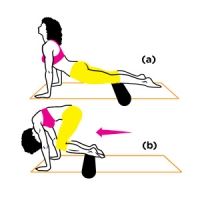
by Neetu | Jun 12, 2020 | Fitness Activity
Aim
The use of a soft body touches on the noodle in order to keep it in personal space.
Equipment Required
1 noodle per student, 1 spot marker per student, 1 Softball per 2 student
Play Area Set-Up
- Create boundaries for a large activity area with large cones.
- Scatter spot markers throughout the area to create a home base for each student.
- Each student to get a noodle
Activity Description
Revise the concept of personal space and Reemphasize on working in personal space
Activity 1: Noodle Rolls
Show and tell how to roll the noodle on the ground. Have them do it forward and backward; have them do it side to side (trickier!) and have them perform with their eyes closed. Have them roll it on their arms. Have them roll it on their legs while sitting down by lifting their bottom and then their feet.
Activity 2: Noodle Side Rolls
- While in the bridge position, have the kids roll the noodle from left to right and then right to left using push from respective hands.
- Have them do the same activity with one of the legs up turn by turn.
Activity 3: Head to Toe roll
- While sitting down, make students do a reverse plank and practice it till they feel comfortable in that position.
- Now, have them put it under their chin and try to roll it down their whole body (left body with hands in reverse plan position) and letting it go from their chin
Activity 4: Stretcher Roller
- Make partners from the group and have them hold both noodles from one end each in a way they make a stretcher.
- Explain to them what is stretcher and what is it used for.
- Now, have them put one softball on to the stretcher, balance it and roll it from one partner end to the other partner end.
- All challenges by making them move while doing it or increasing the height at which they are holding the noodles
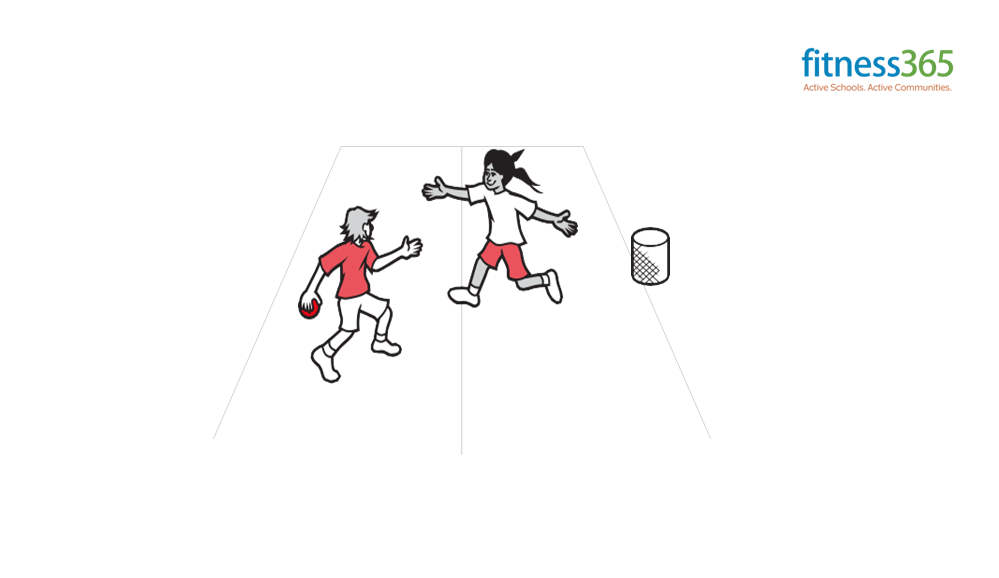
by Neetu | Jun 12, 2020 | Fitness Activity
Movement skills/concepts
Dodging a defender, moving in general space, changing direction and speed.
Set-up
- Balls or another throwing implement, bin, markers.
- On a defined grass or hard court area, three lines (base, centre and end) are marked out, approximately 5 metres apart.
- Children in pairs, one ball runner and one defender, with one ball/implement per pair.
Activity
The ball runner’s task is to score by placing the ball in the bin without being tagged by their defender. The ball runner starts on the baseline and the defender on the centre line. Children change roles and repeat.
Variations
Vary equipment and skill: For example, dribble a soccer ball to score a goal by crossing the end line.
Vary line distance: Increase/decrease the distance between lines to make it easier/ harder for runner/defender.
Vary area layout: Place a ‘no tag’ area around each bin.
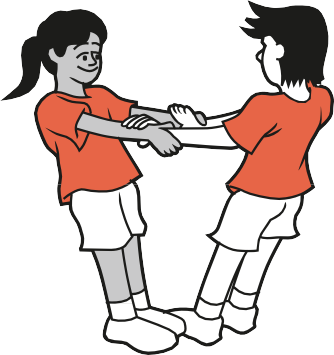
by Santosh | Jun 12, 2020 | Fitness Activity
Movement skills/concepts
Rotating with a partner, cooperative balancing, rotating through long and horizontal axes at different speeds, body awareness and relationships (with others).
Set-up
Grass, floor or hard area.
Children in pairs, matched approximately for height and weight.
Activity
Clothes line: Partners face each other and each grips both of the other’s wrists. Turn like a revolving clothes line on a mild/windy/gusty day. Now turn like a clothes line that has a heavy load of washing.
Partner log roll: Partners lie on their stomachs facing each other, with arms stretched out above the head. Link hands and roll in the same direction. Keep your body long and straight.
Can you roll …?
- three times in a row
- so that your feet don’t touch the mat
- with your feet locked together instead of your hands
- with a ‘sock’ held between your feet
Eskimo roll: Partner 1 lies on their back; Partner 2 stands facing forwards with their feet near Partner 1’s shoulders. Partner 1 holds Partner 2’s ankles and raises their legs so that Partner 2 can hold each leg above the ankle. Partner 2 leans forward and
places Partner 1’s feet on the floor and performs a forward roll. Partner 1 follows, still holding onto Partner 2’s ankles.
Can you see …?
- controlled movement when rolling with partner
- communication with partner – working together
You could ask …
How do you and your partner work together to perform the partner log roll?
Variations
Snake in the grass: Four children on their stomachs, with straight bodies, lie in a chain on a mat. Each child holds onto the ankles of the child ahead of them. On a signal, the whole chain rolls over onto their backs and then onto their stomachs.
COOL DOWN/ CLOSURE
Review Skill/Activity, stretching, and questions.










